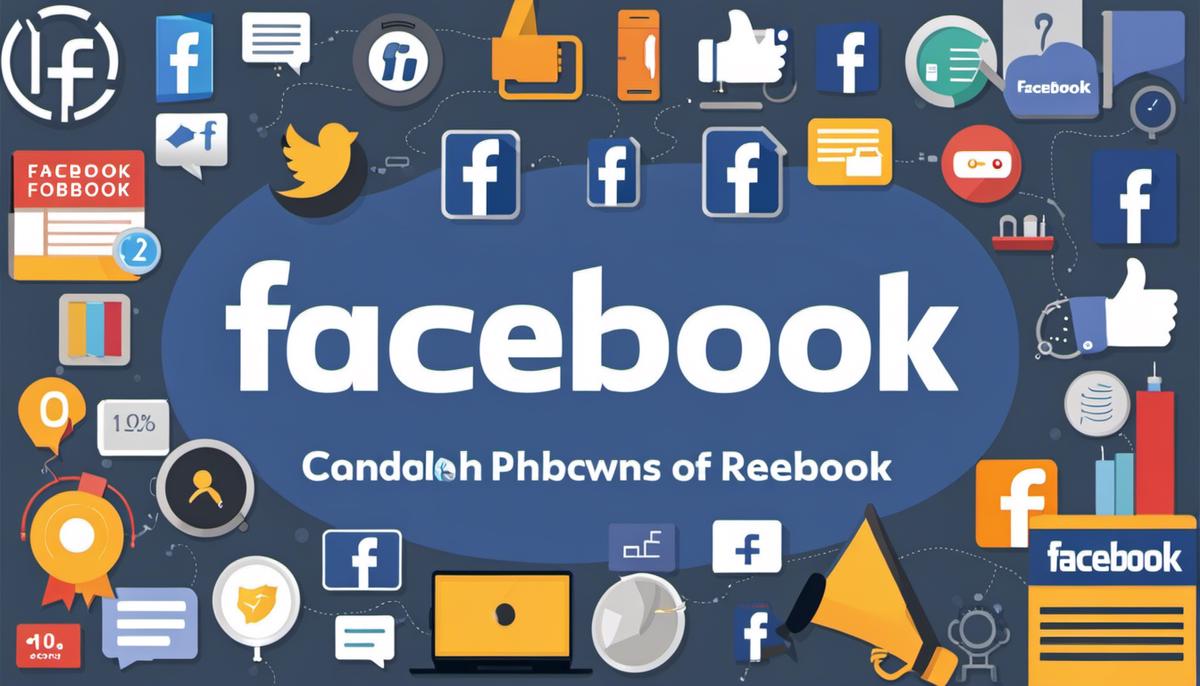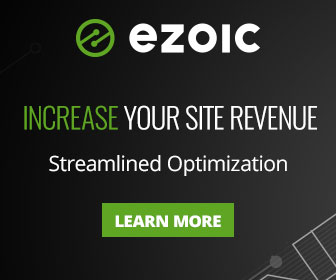In an era where almost everyone is socially connected, Facebook stands out as one of the largest platforms for interaction. Not merely a tool for socializing and catching up, Facebook provides an integral space for content creation, specifically blogging, for businesses, influencers, and thought leaders alike.
This guide will take you through the basics of Facebook, its functionality, layout, and user behaviours along with the essentials of successful blogging. Gaining an in-depth understanding of Facebook’s algorithm and how SEO can aid your blog’s visibility within it will be key.
Additionally, you’ll learn how to leverage Facebook Insights and Analytics to channel the reach of your blogs to your targeted audience more effectively.
Contents
Basics of Facebook
Understanding the Functionality, Layout, and User Behavior on Facebook
In order to effectively blog on Facebook, familiarizing yourself with its functionality, layout, and user behaviour is essential. The News Feed, your main homepage, will show updates from friends, liked pages and groups. The notifications pane alerts you about new activity relating to your profile or content. The left panel is your navigation bar for Messenger, Pages, Groups, Ads Manager, and other features.
Facebook’s user behaviour revolves around interactions through liking, commenting, sharing, and reacting. Post visibility is impacted by these interactions, the more a post is interacted with, the more visibility it gains across the network. Understanding this algorithm can help maximize your content reach and engagement.
Creating a Profile or Page on Facebook
To begin, you need to create a Facebook profile by signing up with your email address or mobile number and fill out the necessary information like your name, date of birth, and gender.
To create a page for your blog, click on the Plus (+) icon on the top right side of your Facebook homepage and select Page from the dropdown. Fill out the information asked, including the name of your page, category, and description. After filling out the necessary details, click Create Page.
Posting Updates on Facebook
Posting updates on Facebook is simple. On your timeline or your page, look for the box that says “What’s on your mind?” or “Write a post”. Click on it and write your content. You can add photos or videos, tag friends, check-in to a location, or add a feeling/activity. Once you’re done, click “Post”.
For your Page, you can also schedule updates. Click the arrow next to the Publish button to schedule a post. From here, you can set the date and time when you want your post to publish.
Best Times to Post on Facebook
Optimal timing for posts can vary depending on the audience, the nature of the content, and the engagement level of previous posts. However, data suggests that weekdays from 9 a.m. to 3 p.m. tend to see the highest amount of Facebook traffic. Posts published on Wednesday at 3 p.m., Thursday at 2 p.m.-3 p.m., and Friday at 10 a.m.-11 a.m. demonstrate the highest engagement rates.
Remember, timing isn’t the only aspect that decides the success of your posts on Facebook. Quality and relevance of content, captivating visuals, and starting meaningful conversations with your audience play significant roles too.

Blogging Essentials
Identifying Your Blogging Purpose and Target Audience
First, identify the main purpose of your blog, which dictates the topics you’ll cover and the way you’ll write about them. Be sure to understand who your target audience is. Facebook blogs can cater to a variety of readers including friends, colleagues, or followers of an interest or profession.
Finding Your Blog’s Voice
Creating a unique voice is a crucial part of engaging your audience. Think about your language, tone, and style. Some blogs are conversational and informal, while others are more educational and professional. The voice you use should align with your purpose and target audience.
Creating Compelling Content
Content is king in the world of blogging, so make sure you produce high-quality, relevant, and valuable blog posts. Use a variety of content formats – written articles, photos, infographics, videos, etc., to keep your blog interesting. Don’t forget to use engaging headlines to catch readers’ attention at first glance and draw them into your article.
The Art of Storytelling
Storytelling is a powerful tool in blogging. By sharing personal experiences, telling stories around your subject matter, and developing a narrative arc within your blog posts, you can connect with readers on a deeper level.
Writing Compelling Headlines
Your blog post’s headline is your first impression on your readers. Crafting compelling and click-worthy headlines is crucial. Use actionable language and incorporate strong adjectives. Headlines should create intrigue or identify a solution the reader is seeking.
Consistency in Blogging
Maintaining consistency in your blog posts is crucial to retain your audience’s interest. Set a schedule for your blog posts and stick to it. This can be weekly, bi-weekly, or monthly but it must be consistent. Consistency also applies to the tone, style, and quality of your posts.
Engaging with Your Audience
Engagement with your readers is crucial to sustaining your blog’s popularity. Encourage comments, likes, and shares, and actively respond to them. Creating a two-way communication channel with your audience fosters a sense of community around your blog.
Promoting Your Blog
Once you’ve published your blog posts, you need to promote them. Share them on other social media platforms, include them in your newsletters, and use Facebook’s promotional tools to reach a wider audience.
Monitoring Your Blog’s Performance
Tracking the performance of your blog posts helps you understand what content resonates with your audience. Facebook provides built-in analytics tools like ‘Insights’ that offer valuable data about your posts’ reach, engagement, and audience demographics. Use this information to refine your blog strategy.

Facebook’s Algorithm and SEO
Understanding Facebook’s Algorithm
Facebook uses a complex algorithm known as EdgeRank to decide which posts should be displayed to a user on their feed. This algorithm is based on popularity, the time of posting, and the relevance of content.
- Popularity: It includes likes, shares, and comments your posts receive. Therefore, posts with more interaction are more likely to appear in the news feeds.
- Posting time: Recent posts are more likely to appear in news feeds. Therefore, understanding when your followers are online can increase your post visibility.
- Relevance: Facebook monitors users’ interests based on the type of content they interact with. If users frequently engage with your posts, Facebook will consider your posts relevant and show them on their feed.
Optimize Your Posts
- Encourage Interaction: Create posts that encourage users to interact. You could end your posts with questions or a call-to-action. This will increase the likelihood of comments which in turn increases visibility.
- Timing Matters: Use tools like Facebook Insights which provide data on when your followers are online. Post your blogs during these high activity periods and they’ll be more likely to be seen.
- Relevant Content: Make sure your content is relevant to your followers. If your posts consistently get likes, shares, or comments, Facebook’s algorithm will favour these posts.
SEO Essentials for Facebook Blogs
Just like conventional SEO on search engines, Facebook also takes keywords into account. It can help make your content discoverable both on Facebook and search engines.
- Keyword Usage: Use relevant keywords in your Facebook blogs. These keywords should be included in the blog’s title, subtitles, and content. However, don’t stuff keywords unnecessarily as it may negatively impact the reading experience.
- Meta Description: When sharing a blog post on Facebook, ensure that the URL has a meta description with relevant keywords. This summary informs Facebook and search engines what the content is about.
- Hashtags: Use relevant hashtags as they work similar to keywords. It can help users find your content when they search for a particular hashtag.
- Use Links: Including relevant links in your blog posts can increase their SEO value. However, ensure these links are relevant and from reputable sources.
Remember, optimizing your Facebook blogs for Facebook’s algorithm and SEO should go hand-in-hand with creating valuable and engaging content for your readers.

Facebook Insights and Analytics
Understanding Facebook Insights
Facebook Insights is a powerful tool provided by Facebook to help you understand how your blog content is performing on the platform. This tool offers you a comprehensive view of how your audience interacts with your blog posts and also helps you measure key performance indicators.
Through Facebook Insights, you can track likes, shares, comments, and the total reach of your posts. You can also see the number of reactions, the popularity of your post in comparison to others, the overall engagement and much more. Monitoring these metrics on a regular basis will help you understand the success of your blogs and the effectiveness of your Facebook strategy.
Accessing Facebook Insights
To use Facebook Insights, you must first have a Facebook Business Page. From your business page, you can access the Insights tab located on the top bar of the page. Within this dashboard, you’ll be able to see a variety of metrics for your posts.
Analyzing Facebook Insights Data
When you open Facebook Insights, the first page you see is the “Overview” page. This gives you a snapshot of the last seven days. It shows metrics such as Page Views, Page Previews, Page Likes and much more.
To analyze your blogs, you would want to click on the ‘Posts’ tab. Here, you can see data about when your fans are online, post types and post reach. The tab also shows individual post metrics like reach and engagement which includes likes, shares, and comments.
Understanding Your Target Audience
Facebook Insights also helps you better understand your audience demographics and behaviour. The “People” tab allows you to see the age, gender, and location of the people who like, share, and interact with your posts.
You can also use the “Posts” tab to see which kind of content your audience is interacting with most. This data will help you determine what kind of blogs to share in the future to engage your audience better.
Tailoring Your Blogging Strategy
Based on your Facebook Insights data, make the necessary adjustments to your blogging strategy. For instance, if you find that your audience is most active at a particular time of the day, schedule your posts around that time to increase engagement.
If certain types of blogs generate more engagement, prioritize creating and sharing more of those. Remember, the goal is to consistently create and share content that resonates with your audience.
conclusion
Facebook Insights and Analytics provide invaluable data to understand your target audience, measure the success of your blogs, and align your blogging strategy for better impact. Regular monitoring and adjusting based on insights can help optimize your blogging efforts on Facebook.

After perusing through this comprehensive guide, you should be able to approach Facebook not just as a user, but as a content artisan brimming with practical insight into the world of Facebook blogging.
With your newfound understanding of the platform’s features, algorithms, SEO, and analytics, you’ll be confident in creating compelling posts that your audience will appreciate and engage with.
Remember, consistency is the key to a successful blog, so dedicate time regularly for ideating, curating, and analyzing your posts. Here’s to your blogging journey on Facebook, fuelled by understanding and innovation!


